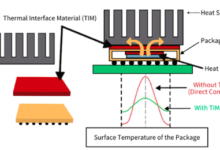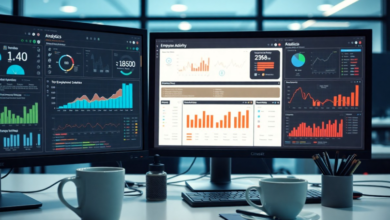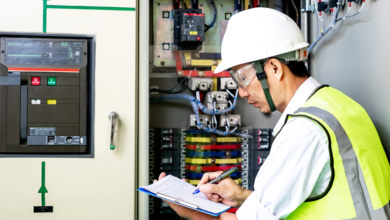Safe Passage: Navigating the Waves of Debit Card Unauthorized Transactions

Introduction
Unauthorized debit card transactions can be a significant concern, potentially leading to financial loss and stress. Understanding how to prevent, detect, and respond to these incidents is crucial for safeguarding your finances. This guide will provide you with the knowledge and tools to navigate the complexities of unauthorized debit card transactions, ensuring you can handle them efficiently and maintain your financial security.
Understanding Unauthorized Debit Card Transactions
What Are Unauthorized Transactions?
Unauthorized transactions occur when someone uses your debit card or card information without your permission. These transactions can happen due to various reasons, such as theft, data breaches, or phishing scams. By understanding these risks and knowing how to respond effectively, you can navigate the complexities of debit card transactions with confidence and peace of mind, ensuring a secure journey through the realm of debit card unauthorized transaction.
Common Causes of Unauthorized Transactions
- Lost or Stolen Cards: Physical theft or loss of your debit card can lead to unauthorized use.
- Data Breaches: Hackers gaining access to retailer or financial institution databases can steal card information.
- Phishing Scams: Fraudulent emails, texts, or calls tricking you into providing your card details.
- Skimming Devices: Devices placed on ATMs or point-of-sale terminals to capture card information during legitimate transactions.
Preventive Measures to Avoid Unauthorized Transactions
Safeguard Your Debit Card
- Keep Your Card Safe: Always know where your card is and keep it in a secure place.
- Never Share Your PIN: Do not share your Personal Identification Number (PIN) with anyone and avoid writing it down.
- Monitor Your Card Usage: Regularly check your bank statements and transaction history for any unusual activity.
Use Secure Methods for Transactions
- Online Purchases: Ensure the website is secure by looking for “https” in the URL and a padlock icon in the address bar.
- ATM Usage: Use ATMs located in secure, well-lit areas. Cover the keypad when entering your PIN.
- Contactless Payments: Use contactless payments where possible, as they reduce the risk of skimming.
Be Cautious of Scams
- Verify Sources: Always verify the source of emails, texts, or calls asking for your card information.
- Do Not Click on Suspicious Links: Avoid clicking on links in unsolicited emails or messages.
- Shred Sensitive Documents: Shred bank statements and documents containing personal information before disposal.
Steps to Take if You Encounter Unauthorized Transactions
Immediate Actions
- Report to Your Bank: Contact your bank immediately to report the unauthorized transaction. Most banks have a 24/7 hotline for such emergencies.
- Freeze Your Card: Temporarily freeze your debit card to prevent further unauthorized transactions. This can often be done through your bank’s mobile app or website.
Regularly Review Privacy Settings
Review the privacy settings of your online accounts and adjust them to restrict access to sensitive information.
Document the Incident
- Record Details: Note the date, time, and amount of the unauthorized transaction.
- Keep Correspondence: Save any emails or messages exchanged with your bank regarding the incident.
- File a Police Report: Depending on the severity, you might need to file a police report to document the fraud.
Follow Up with Your Bank
- Dispute the Transaction: File a formal dispute with your bank. They will investigate the incident and may provide provisional credit while the investigation is ongoing.
- Replace Your Card: Request a new debit card with a different number to prevent further unauthorized use.
- Monitor Your Account: Keep a close eye on your account for any additional suspicious activity.
Protecting Your Financial Security
Utilize Bank Security Features
- Alerts and Notifications: Set up transaction alerts to receive notifications for any activity on your account.
- Two-Factor Authentication: Enable two-factor authentication for online banking to add an extra layer of security.
- Biometric Verification: Use biometric verification methods, such as fingerprint or facial recognition, for added security.
Regular Account Monitoring
- Check Statements: Regularly review your bank statements for any discrepancies.
- Review Transactions: Frequently review your account transactions online or via your bank’s mobile app.
- Audit Your Credit Report: Periodically check your credit report to ensure there are no unauthorized accounts or activities.
Educate Yourself and Others
- Stay Informed: Keep up-to-date with the latest fraud prevention tips and security practices.
- Educate Family Members: Ensure that family members, especially those who may be less tech-savvy, are aware of how to protect their debit card information.
- Report Suspicious Activity: If you encounter phishing scams or suspicious activity, report it to your bank and relevant authorities.
Conclusion
Navigating the waves of unauthorized debit card transactions requires vigilance, prompt action, and ongoing education. By implementing preventive measures, knowing how to respond to fraud, and utilizing your bank’s security features, you can protect your financial security and minimize the impact of unauthorized transactions. Stay informed and proactive to ensure your financial journey remains safe and secure.






